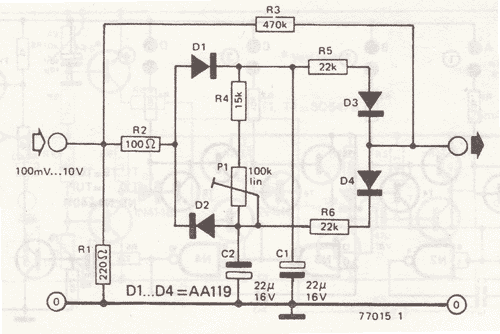Hey, I found this scheme in the web, just want to hear some opinions...
I've tried it with the guitar amp in a protoboard, pick up a lot of noise (hi-z and no shielding) but it do compress and with variable attack(R2), release (P1) and ratio(R5/R6/R3)... maybe could be controled the symmetry (R5/R6) (to look for asymmetrical compression)
Of course it isn't the choice for who is looking for a transparent gain contol, but for a colourfull compressor may work. It would probably need some optimization and in/out buffer (no more passive) but it's at least courious.

JS
I've tried it with the guitar amp in a protoboard, pick up a lot of noise (hi-z and no shielding) but it do compress and with variable attack(R2), release (P1) and ratio(R5/R6/R3)... maybe could be controled the symmetry (R5/R6) (to look for asymmetrical compression)
Of course it isn't the choice for who is looking for a transparent gain contol, but for a colourfull compressor may work. It would probably need some optimization and in/out buffer (no more passive) but it's at least courious.

JS



